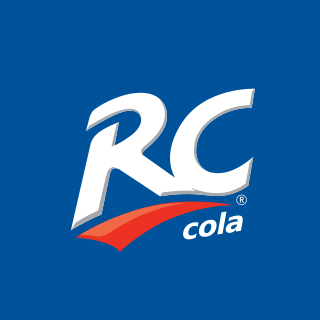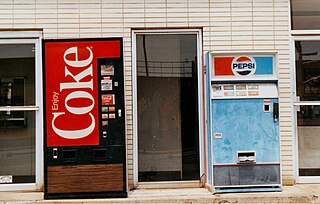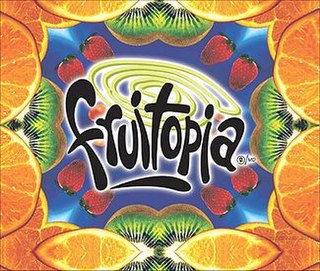
Coca-Cola, or Coke, is a cola soft drink manufactured by the Coca-Cola Company. In 2013, Coke products were sold in over 200 countries worldwide, with consumers drinking more than 1.8 billion company beverage servings each day. Coca-Cola ranked No. 94 in the 2024 Fortune 500 list of the largest United States corporations by revenue. Based on Interbrand's "best global brand" study of 2023, Coca-Cola was the world's sixth most valuable brand.

Cola is a carbonated soft drink flavored with vanilla, cinnamon, citrus oils, and other flavorings. Cola became popular worldwide after the American pharmacist John Stith Pemberton invented Coca-Cola, a trademarked brand, in 1886, which was imitated by other manufacturers. Most colas originally contained caffeine from the kola nut, leading to the drink's name, though other sources of caffeine are generally used in modern formulations. The Pemberton cola drink also contained a coca plant extract. His non-alcoholic recipe was inspired by the coca wine of pharmacist Angelo Mariani, created in 1863.

Moxie is a brand of carbonated beverage that is among the first mass-produced soft drinks in the United States. It was created around 1876 by Augustin Thompson as a patent medicine called "Moxie Nerve Food" and was produced in Lowell, Massachusetts. The sweet soda is similar to root beer, but with a bitter aftertaste. It is flavored with gentian root extract, an extremely bitter substance commonly used in herbal medicine.

Pepsi is a carbonated soft drink with a cola flavor, manufactured by PepsiCo. As of 2023, Pepsi is the second most valuable soft drink brand worldwide behind Coca-Cola; the two share a long-standing rivalry in what has been called the "cola wars".

RC Cola is a cola-flavored carbonated beverage owned in the United States by Keurig Dr Pepper and internationally by RC Global Beverages, Inc.

Coca-Cola Vanilla is a vanilla-flavored version of Coca-Cola, introduced in 2002 but subsequently discontinued in North America and the United Kingdom in 2005, though it remained available at certain fountain outlets. It was relaunched in the US in 2007, in Denmark in 2012, the UK in 2013 and Canada in 2016. Vanilla Coke has been available in Australia since its initial introduction in 2002, being produced by Coca-Cola Europacific Partners. Originally announced as a limited edition in the UK, it became permanent for several years; however, Vanilla Coke was again discontinued in the UK in Summer 2018, though Diet Vanilla Coke and Coke Vanilla Zero remain available.

New Coke was the unofficial name of a reformulation of the soft drink Coca-Cola, introduced by the Coca-Cola Company in April 1985. It was renamed Coke II in 1990, and discontinued in July 2002.

The Cola wars are the long-time rivalry between soft drink producers The Coca-Cola Company and PepsiCo, who have engaged in mutually-targeted marketing campaigns for the direct competition between each company's product lines, especially their flagship colas, Coca-Cola and Pepsi. Beginning in the late 1970s and into the 1980s, the competition escalated until it became known as the cola wars.

Crystal Pepsi is a cola soft drink made by PepsiCo. It was initially released in the United States and Canada from 1992 to 1994. It was briefly sold in the United Kingdom and Australia.

Tab was a diet cola soft drink produced and distributed by The Coca-Cola Company, introduced in 1963 and discontinued in 2020. The company's first diet drink, Tab was popular among some people throughout the 1960s and 1970s as an alternative to Coca-Cola. Several variations were made, including a number of fruit-flavored, root beer, and ginger ale versions. Caffeine-free and clear variations were released in the late 1980s and early 1990s.

Surge is a citrus-flavored soft drink first produced in the 1990s by the Coca-Cola Company to compete with Pepsi's Mountain Dew. Surge was advertised as having a more "hardcore" edge, much like Mountain Dew's advertising at the time, in an attempt to lure customers away from Pepsi. It was originally launched in Norway as Urge in 1996, and was so popular that it was released in the United States as Surge in 1997. Lagging sales caused production to be ended in 2003 for most markets.

Coca-Cola C2 was a cola-flavored beverage produced in response to the low-carbohydrate diet trend. This Coke product was marketed as having half the carbohydrates, sugars and calories compared to standard Coca-Cola. It contained aspartame, acesulfame potassium, and sucralose in addition to the high fructose corn syrup typically found in cola beverages distributed in America.

Fresca is a grapefruit-flavored citrus soft drink created by The Coca-Cola Company. Borrowing the word Fresca from Italian, Spanish, and Portuguese, it was introduced in the United States in 1966. Originally a bottled sugar-free diet soda, sugar sweetened versions were introduced in some markets.

The Coca-Cola Company is an American multinational corporation founded in 1892. It manufactures, sells and markets soft drinks including Coca-Cola, other non-alcoholic beverage concentrates and syrups, and alcoholic beverages. Its stock is listed on the New York Stock Exchange and is a component of the DJIA and the S&P 500 and S&P 100 indexes.

Coca-Cola Zero Sugar is a diet cola produced by the Coca-Cola Company.

Coca-Cola Cherry is a cherry-flavored version of Coca-Cola. It is produced and distributed by the Coca-Cola Company and its bottlers in the United States and some international markets.

Fruitopia is a fruit-flavored drink introduced by the Coca-Cola Company's successful Minute Maid brand in 1994 and targeted at teens and young adults. According to New York Times business reports, it was invented as part of a push by Minute Maid to capitalize on the success of Snapple and other flavored tea drinks. The brand gained substantial hype in the mid-1990s before enduring lagging sales by the decade's end. While still available in Canada and Australia as a juice brand, in 2003, Fruitopia was phased out in most of the United States where it had struggled for several years. However, select flavors have since been revamped under Minute Maid. Use of the Fruitopia brand name continues through various beverages in numerous countries, including some McDonald's restaurant locations in the United States, which carry the drink to this day.
Tab Clear was a variation of Tab. It is Coca-Cola's contribution to the short-lived "clear cola" movement during the early 1990s. It was introduced in the United States on December 14, 1992, in the United Kingdom a month later and in Japan in March 1993 to initially positive results. Tab Clear was, however, discontinued after only a short time of marketing in 1994. Unlike most other "clear" soft drinks, Tab Clear contained caffeine and, according to the company, had the flavor of cola.

Whiskey and Coke is a highball cocktail made by mixing whiskey, typically bourbon or Tennessee whiskey, with Coca-Cola or other colas. A popular version of the drink is Jack and Coke, where the Jack Daniel's brand of whiskey is used. The drink is especially popular in the American South. The drink is generally served with ice – sometimes in an old-fashioned glass or a Collins glass, and sometimes in less-expensive containers such as disposable plastic cups. When bourbon is used, it is often called bourbon and Coke, or more generically, bourbon and cola. The "Coke" part of the name may tend to imply that the Coca-Cola brand of cola is used, but it is common for any brand of cola to be referred to as "Coke", at least in the American South.

Coming Together is a 2-minute ad created and distributed by the Coca-Cola Company and launched on the night of January 14, 2013, on several cable networks.






















